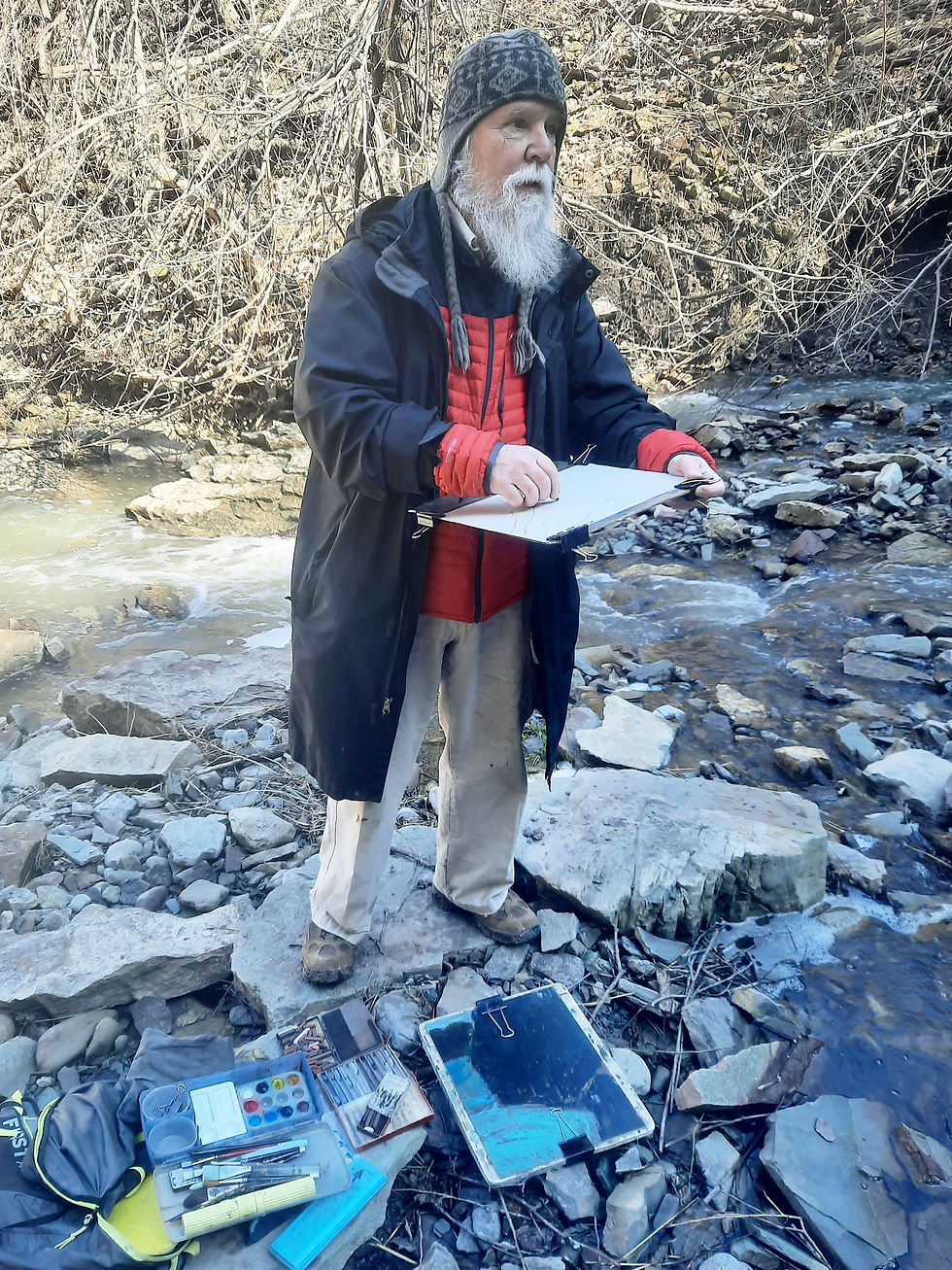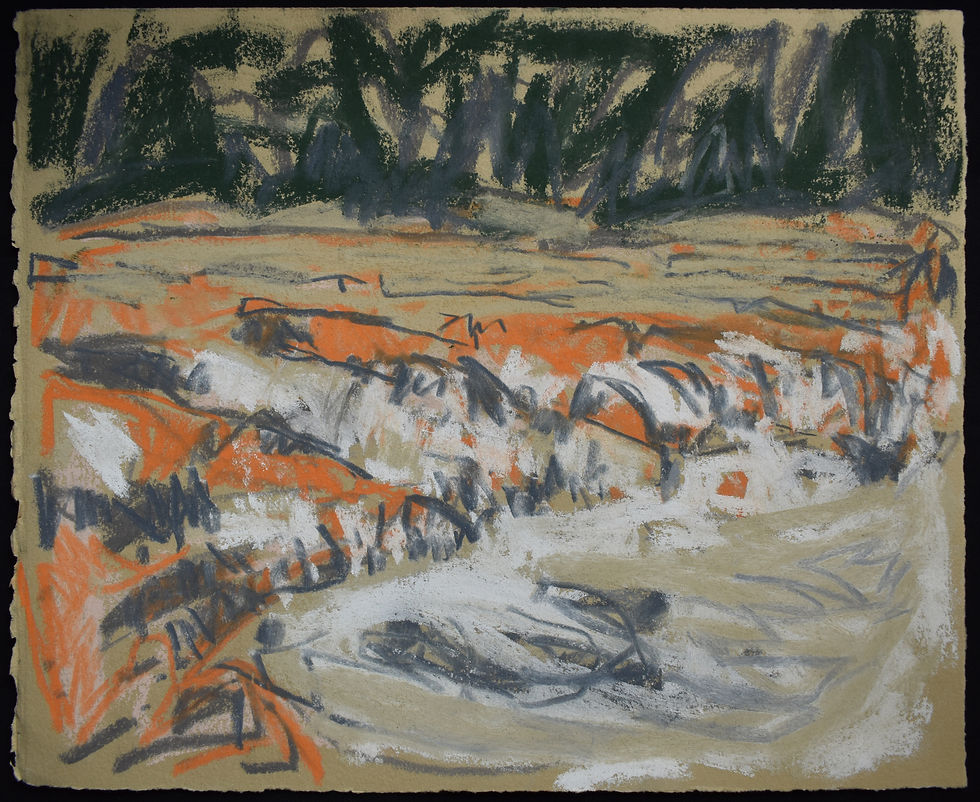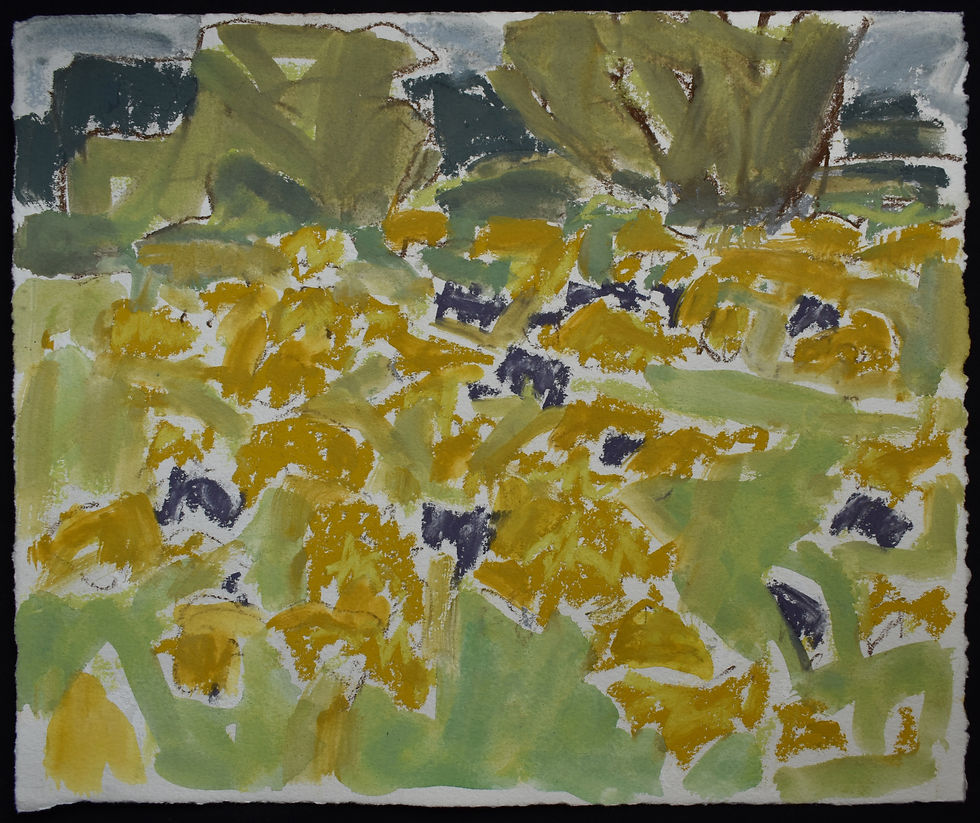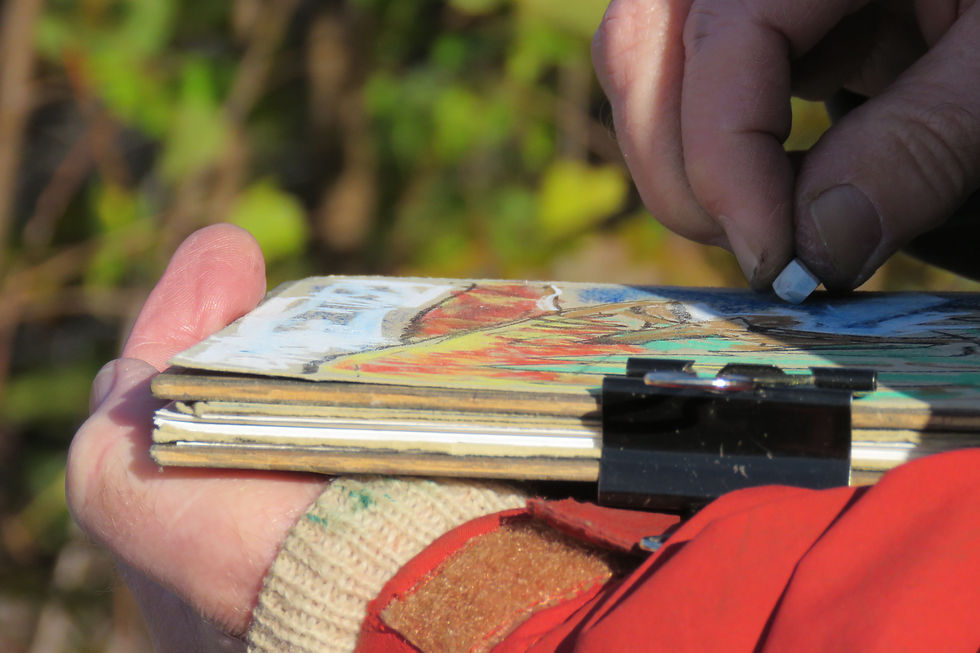Q & A with Barry Hodgson
- Andrea Jackman
- May 8, 2024
- 5 min read
Updated: Nov 26, 2024

When did you first become interested in art?
Art has been part of my life for as long as I can remember. My grandfather, Edmund Sproston, was always drawing. He grew up in Staffordshire, U.K., where he was entirely self-taught, having been offered a chance to attend art school when he was 14, but forced to refuse it by his resolutely working-class family, who thought his place was in the factories. I remember drawing with him after they came to live with us when I was about 5 or 6. Gallery and museum visits were also a common thing for us as a family.
Barry Hodgson onsite at Devil's Punch Bowl, Stoney Creek.
Working in Pastels and watercolours
What are you working on right now?
I am doing some field work on the local trails. One of our house plants is doing well and leading me to prefigure this year’s garden work with some indoor things. I am also reviewing recent field pieces to see if any are going to lead to larger studio treatments. Nothing you could call “planning”, just assessing the general potential, so I can have the right variety of choices available when matching ideas to materials. Some are from my garden, some from last year’s trips on the Bruce Trail, Lake Huron and to Prince Edward County. I also have a large number of small pieces and sketches from a just completed family holiday to Indonesia. The actual studio work will have to wait for warm weather since my studio is in my home right now and I do my large, messy work in an improvised studio in the backyard.
What mediums do you work with?
I work in oils on panel and in a variety of media on paper – conte, pastels, watercolours, watercolour pencils and India ink. Very rarely I make sculpture from wood, branches, paint and found bits of metal and stone.

Barry working onsite at Devil's Punch Bowl.
What inspires your work?
I try to be in the moment and respond to my experience of the world. I am drawn mostly to the natural features of the landscapes I have lived in and visited. This always involves seeing the subject, the mark-making possibilities of the various media and my own inclinations in a complex, 3-sided relationship which determines the nature of each piece.

Maitland Falls pastel on paper 10 x12 in. 2023
What drives you to work in a particular size: small or large?
In field work, circumstance decides all. On an outdoor painting day, time is a factor since the light will change at noon and scale is limited by what I can carry, so I work on panels or paper from 10” up to 24”. In other more extreme situations, such as on a moving boat or when traveling, I might get only a few minutes or even seconds to bang down an idea so I work very small, 3 to 6 inches.
In the studio, it is the character of the subject and the chosen materials that influence the decision. Some landscape subjects demand large treatments to enhance impressions of mass or expanse. Other subjects, such as my garden pieces, more naturally sit at a medium or small scale. Some materials create marks that work well on small or medium scale compositions, but change character when used to fill a larger space. Certain support materials create limits too: the paper I prefer has a maximum size of 30” x 44”, the wood panels for oils get very heavy and have seams if they are larger than 60”.
Which artist/s have influenced your work the most throughout your career?
David Milne, Barker Fairley, Milton Avery - all for their marvelous ability to balance abstraction and representation. Henri Matisse for the same reason, but also as much for the way he thought as the work itself. His essays contain some great insights into how to approach our work. I am also very aware of the example of his career: Matisse did everything -painting, drawing, collage, printmaking, sculpture -completely re-inventing himself periodically - never afraid to change.
If you were not an artist, what would you be and why?
I would be a scientist of some sort – environment or geology. I respect facts and I value the scientific way of understanding the world: the search for new knowledge and the revising of accepted ideas and practices can edge society toward a more accurate vision of reality. I was working in both directions, art and science, when I started university, but when the intense demands of science studies pushed the art aside completely, I realized that art was where I needed to be. My fields of study in science figured prominently in my choice of landscape as the primary subject of my art.

Goldenrod, Perth County pastel and watercolour on paper 10" x 12" 2023
How has your artistic practice changed over time?
In the very early years, I was pushing myself towards abstraction. Very quickly this suppression of the subject started to feel artificial and unnecessary. First, I allowed the subjects to reassert themselves in the field work and later in the studio as well. Now, I have come to value mark-making and composition above all else and I am comfortable letting each piece find its own degree of representation or abstraction.
What is your dream project?
An Artist-in-Residence project somewhere with an exciting landscape. I once had the great privilege of filling this role for a month at Gros Morne National Park, one the greatest landscape experiences Canada has to offer. A similar opportunity somewhere inspiring, maybe longer so I could combine the field work and the studio work, would be wonderful.
What would you like others to know about your art that you think is unique?
I would like people to understand the extremity of my commitment to in-the-moment decision making – to the point that it feels that it is impossible to know how to paint. In over 40 years of working, I have learned a great deal about painting and that experience is valuable, but when standing in front of my easel, I have to learn how to make this painting by painting it.
If you could give an artist starting out some advice what would it be?
Be as wholly yourself as possible. Do the things that resonate deep within yourself. Be selective about your influences and absorb them, don’t copy them. It probably won’t make you popular, but it will make you matter.

Barry working on a small travel sketch pad
What kind of experience do you want the viewer to walk away with?
When a viewer turns away from one of my pieces, I want them to feel as if they are returning from a journey, that the work is a place they could return to and find something that matters to them.
Last words or Quote:
There are two passages that have informed my thinking for many years. The first is from Matisse’s “Notes of a Painter” (1908):
“All that is not useful in the picture is detrimental.”
It is easy to see this as a call for simplicity, but I think it is more accurate to see it as an instruction to be selective.
The second is from Gertrude Stein’s essay “Composition as Explanation” (1926) In its original form it is a bit complicated (it is Stein after all), but I paraphrase it as:
“A work of art is a thing made by being made…not a thing prepared.”
Taken together, along with my experience with plein air work, these ideas have formed the foundation of my commitment to the importance of “being in the moment”.







تعليقات